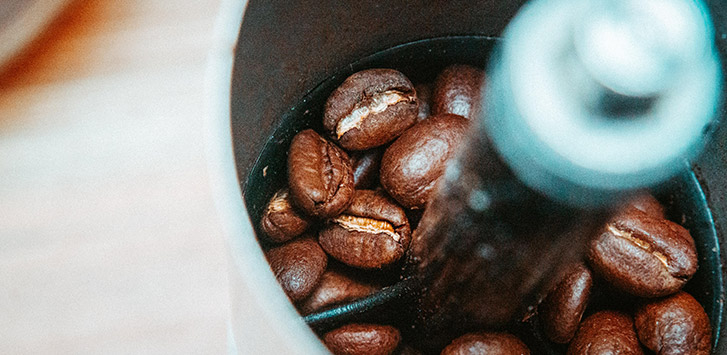With the arrival of third wave coffee came the rise in popularity of the good ole light roast. Due to improved coffee farming techniques, unroasted coffee beans from every region boast unique, tantalizing, and delicate flavors that are best drawn out by a light roast. So, let's get into what a light roast is.

What Is Light Roast Coffee?
Light roast coffee is made by roasting green coffee beans until their internal temperature reaches 350-400 degrees Fahrenheit. This means roasters often pull the beans from the roaster before they reach the first crack. It’s important to note that light roast means something a little different to everyone. For some roasters, coffee beans are still considered a light roast even if they reach the first crack. But the line between light roast and medium roast is small, so be careful if that’s the strategy you’re using!
Once finished roasting, the coffee bean is a light brown color with no oil on the surface. The lack of oil helps emphasize the lighter, more delicate flavors that make each growing region unique.
People commonly ask which roast type has the most caffeine. The short answer is each roast level has similar levels of caffeine. The long answer is light roast has more caffeine per bean because these beans are more dense than medium roast or dark roast. That means if you measure your coffee by cups, then your light roast coffee will have a little more caffeine than your dark roast. But if you measure your coffee by weight, then both light and dark roast coffee will be equal.
You can learn more about the differences between medium roast and dark roast coffee in the Ultimate Guide to Medium Roast Coffee and the Ultimate Guide to Dark Roast Coffee.
Light Roast Coffee Flavor Profile
Light roasted coffee delivers a complex, delightful blend of flavors reminiscent of their growing regions. They're characterized by a bright acidity, mellow body, and floral and fruity notes. The short roast time allows for the wild, delicate, unique flavors to break through and permeate your cup of coffee.
What Coffee Beans Work Best With a Light Roast
You can always experiment with any coffee beans at any roast level, but there are some green coffee beans that naturally work better as a light roast. Here’s a short list for you to help you get started.
African coffee beans have a bright acidity highlighted by fruity flavors and delicate floral notes. Both Tanzanian Peaberry coffee beans and Ethiopian Sidamo work really well. Tanzanian coffee has a citrusy flavor with hints of jasmine and a floral aroma. A nice Ethiopian Sidamo coffee has subtle blueberry notes, earthy undertones, and a smooth finish.
As a light roast, South American coffee has a bright acidity, smooth mouthfeel, fruity undertones and chocolately notes. Costa Rican coffee is a great South American coffee for this roast type with notes of chocolate, hazelnut, caramel and a subtle fruity finish.
Last but not least, Hawaiian Kona coffee beans! Hawaiian coffee is best as a light roast. Darker roasts destroy the delicate, lighter flavors that make Hawaiian Kona coffee so great.

Best Brewing Methods for Light Roast Coffee
Light roasts are generally more finicky to brew than other roast types. To get it right every time, make sure you’re using the right grind size, water temperature, and brew time for your specific brewing method.
Now that we got that disclaimer out of the way, here’s some of the best ways to brew your light roast.
Cold brew – If you love the taste of a light roast but don’t want such an acidic coffee, cold brew is perfect for you. It neutralizes the naturally acidic light roast while preserving all the delicate flavors you love.
Espresso – Blonde roast espresso has taken over the coffee scene. It’s got all the benefits of espresso with the unique, fruity flavors of a light roast. But make sure you use a coffee bean that has some chocolate and earthy flavors to give your espresso a richer body.
French Press – The longer contact time for a French Press allows the coffee to soak up all the flavors from the beans and create a bright, acidic, fruity cup of coffee.
Pour Over – A classic, the pour over method works well to create a smooth, fruity, floral coffee that’s delicious.
Conclusion
Light roast coffee really captures the delicate fruity and floral flavors that are unique to each growing region. So, next time you go to roast coffee, why not try a light roast?